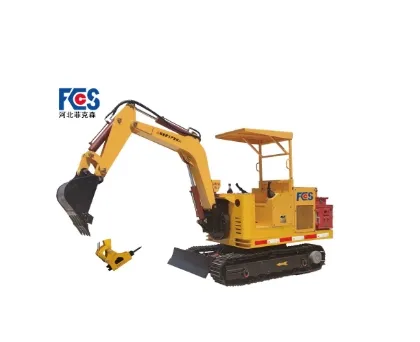- Afrikaans
- Albanian
- Amharic
- Arabic
- Armenian
- Azerbaijani
- Basque
- Belarusian
- Bengali
- Bosnian
- Bulgarian
- Catalan
- Cebuano
- Corsican
- Croatian
- Czech
- Danish
- Dutch
- English
- Esperanto
- Estonian
- Finnish
- French
- Frisian
- Galician
- Georgian
- German
- Greek
- Gujarati
- Haitian Creole
- hausa
- hawaiian
- Hebrew
- Hindi
- Miao
- Hungarian
- Icelandic
- igbo
- Indonesian
- irish
- Italian
- Japanese
- Javanese
- Kannada
- kazakh
- Khmer
- Rwandese
- Korean
- Kurdish
- Kyrgyz
- Lao
- Latin
- Latvian
- Lithuanian
- Luxembourgish
- Macedonian
- Malgashi
- Malay
- Malayalam
- Maltese
- Maori
- Marathi
- Mongolian
- Myanmar
- Nepali
- Norwegian
- Norwegian
- Occitan
- Pashto
- Persian
- Polish
- Portuguese
- Punjabi
- Romanian
- Russian
- Samoan
- Scottish Gaelic
- Serbian
- Sesotho
- Shona
- Sindhi
- Sinhala
- Slovak
- Slovenian
- Somali
- Spanish
- Sundanese
- Swahili
- Swedish
- Tagalog
- Tajik
- Tamil
- Tatar
- Telugu
- Thai
- Turkish
- Turkmen
- Ukrainian
- Urdu
- Uighur
- Uzbek
- Vietnamese
- Welsh
- Bantu
- Yiddish
- Yoruba
Compact Power and Precision: Excavators in Modern Mining and Construction
Excavators are the backbone of material handling, earthmoving, and excavation work across mining, construction, and tunneling industries. With innovation driving equipment design, modern excavators have become more specialized, efficient, and tailored to specific environments. Among the most vital machines in this evolution are the underground mining excavator, the versatile crawler mini excavator, and the diverse range of crawler excavator types designed to meet different job site demands.

Underground Mining Excavator: Designed for the Depths
The underground mining excavator is a highly specialized machine built to operate in the restricted, harsh environments of subsurface mines and tunnels. These excavators are designed with compact frames, reinforced structures, and low emissions systems to ensure they can work efficiently in confined spaces without compromising on performance or safety.
Unlike standard excavators, an underground mining excavator features flameproof or explosion-proof components, essential for operating in volatile mining conditions where flammable gases or dust are present. The hydraulic systems are also enclosed or specially sealed to prevent leaks, further enhancing the safety profile of the machine.
Operators benefit from remote-controlled or cabin-protected designs, ensuring safer operation in dangerous zones. These machines are used for tasks like scaling tunnel walls, removing overburden, loading ore, and clearing debris. Due to their rugged build and adaptability, underground mining excavators are indispensable in operations such as coal mining, gold extraction, and salt mining.
Their ability to maneuver through tight tunnels and work with precision makes them far more efficient than traditional loaders or manual labor, significantly reducing project timelines and improving output.
Crawler Mini Excavator: Compact, Agile, and Efficient
The crawler mini excavator is a small but powerful machine used extensively in urban construction, landscaping, utilities installation, and smaller excavation projects. It’s a compact version of the full-size crawler excavator, equipped with rubber or steel tracks for enhanced stability on uneven or soft ground.
What makes the crawler mini excavator stand out is its ability to operate in confined spaces without sacrificing performance. With features such as zero-tail swing, 360-degree rotation, and easy transportation, it’s the ideal choice for residential projects or jobs that require precision digging in tight areas.
The crawler mini excavator can be equipped with a wide range of attachments, including trenching buckets, hydraulic hammers, augers, and grapples. This versatility allows contractors to perform multiple functions with a single machine, saving both time and operational costs.
Fuel-efficient engines, low noise output, and operator-friendly controls make these machines not only productive but also eco-friendly and safe. Whether it's digging trenches, demolishing small structures, or working in flood control, the crawler mini excavator delivers consistent and reliable performance.
Understanding Crawler Excavator Types: Choosing the Right Machine
The variety of crawler excavator types available today ensures that there is a machine suitable for every task — from compact jobs to heavy-duty earthmoving. Crawler excavator types are typically categorized based on size, engine power, boom configuration, and application.
Standard crawler excavators are commonly used for large construction projects, including road building, trenching, and site development. They offer high digging forces and stability on uneven terrain.
Long-reach crawler excavators feature extended booms and arms, ideal for dredging, slope shaping, and deep foundation work.
Short-tail or zero-swing crawler excavators are engineered for tight-space applications, often found in urban environments and indoor demolition.
Demolition crawler excavators are reinforced with protective guards and high-reach booms, used specifically for tearing down buildings and structures.
Amphibious crawler excavators are equipped with floatation pontoons, allowing them to work in swampy or waterlogged environments.
Each of these crawler excavator types can be customized with attachments and control technologies that optimize them for specific industries like forestry, pipeline laying, and of course, underground mining.
When selecting from various crawler excavator types, it's crucial to consider factors such as terrain conditions, space limitations, lifting capacity, and job duration. Choosing the right type not only improves efficiency but also ensures long-term equipment durability and operator safety.
Excavators Evolved for Every Challenge
From the robust underground mining excavator built for the world's deepest environments to the agile crawler mini excavator perfect for compact urban workspaces, modern excavation machinery is more adaptable than ever. With a growing list of crawler excavator types tailored to specific jobs, operators and project managers have the tools they need to achieve precision, safety, and performance on any site.
As demand for smarter, safer, and more efficient excavation solutions grows, investing in the right equipment can be the difference between a project that just works and one that works exceptionally well. Whether digging deep underground or maneuvering through narrow city streets, today’s excavators are designed to deliver — no matter the challenge.



